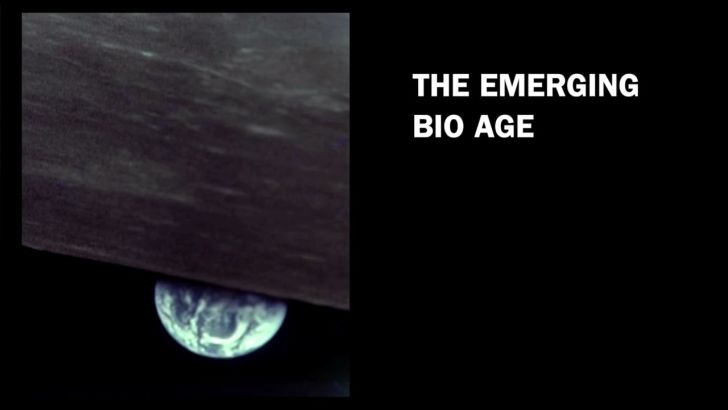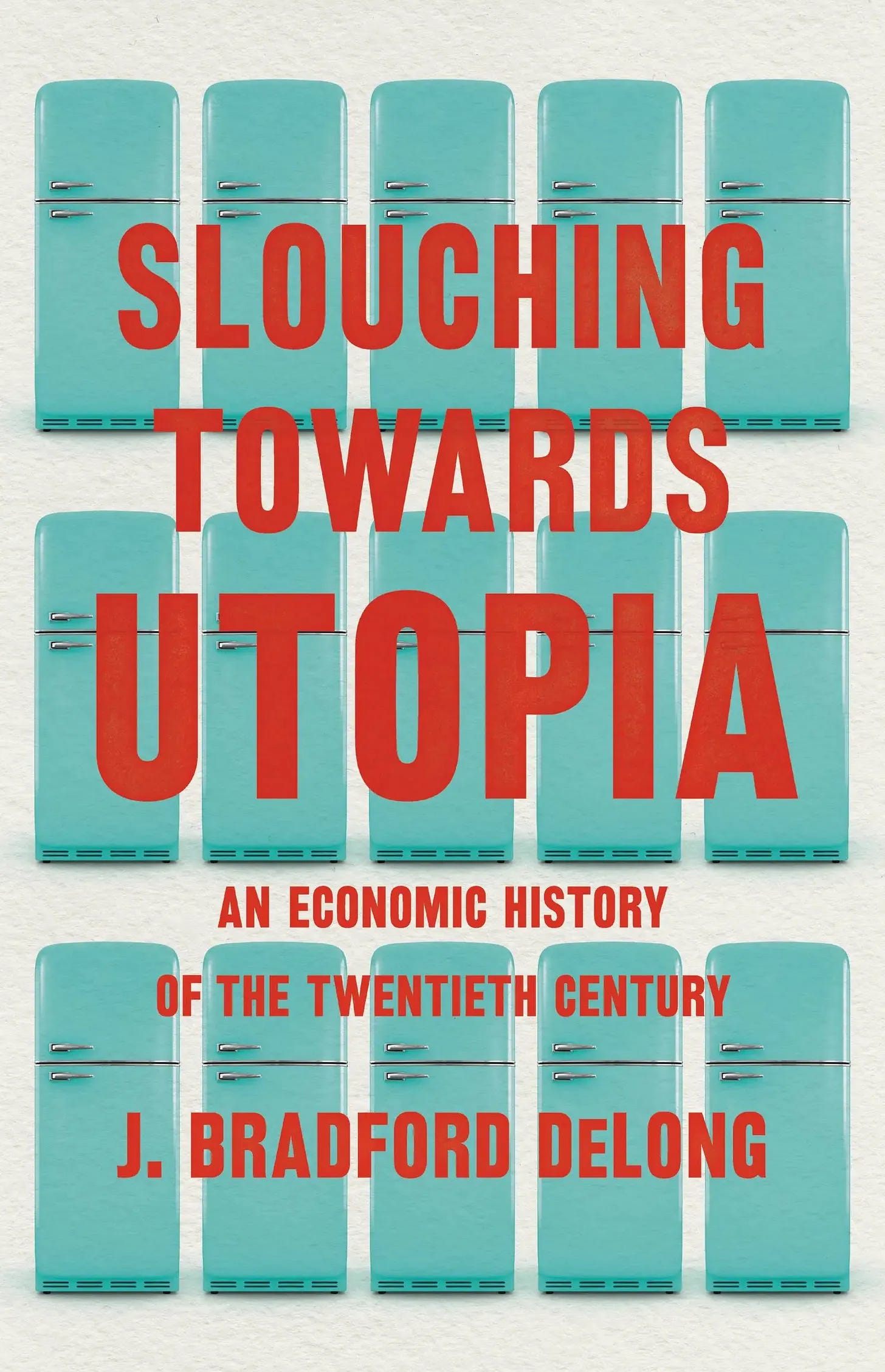9 September 2022. Bio-Age | Economics
Welcome to the Symbiocene // The long 20th century and the end of the good times.
Welcome to Just Two Things, which I try to publish three times a week. Some links may also appear on my blog from time to time. Links to the main articles are in cross-heads as well as the story. A reminder that if you don’t see Just Two Things in your inbox, it might have been routed to your spam filter. Comments are open. And have a good weekend.
1: Welcome to the Symbiocene
There’s an engaging short video by Wendy Schultz and Trish O’Flynn that discusses the characteristics of the coming ‘Bio Age’, which may be the successor to our current digital age.
It’s just over seven minutes, and it’s on Vimeo.
I had the chance to talk to Wendy about this, and she describes it as a ‘meditation’—there is a longer report on the same theme, based on work with the UK Law Society, that is coming out soon.
This is only a short piece—you’ll get more from watching the video—but it’s built around the idea of ‘three steps’ to the Bio Age, which is obviously a useful rhetorical device. The steps are:
- The future is biohacked
- The future is grown
- Long live the Symbiocene
I’ll come back to the Symbiocene later, but one of the things you see in some mainstream discussions of biotechnology or synthetic biology is a strong assumption (looking at you, McKinsey) that these technologies are going to be applied in just the same way that we’ve applied technologies for the past 150 years or so.
What I mean by that is this is that they get deployed for the benefit of humans with little consideration for their wider impact on other species. The Stella McCartney mycelium handbag (and her other fashionwear), which gets a namecheck here, is a case in point.
Maybe it’s interesting to make one of these items, to see what its properties and affordances are—which is what McCartney has done so far—but it really can’t be worth using mycelium as a mainstream substitute for leather if we care properly about our planet and all the species that make up its rich ecologies.
And without wanting it to seem like I’m beating up on Stella McCartney, who has generally been a positive force in the world of top end fashion, effectively the whole worldview around fashion is the same discourse about consumption that has created the crisis that is the Anthropocene.
That’s the real challenge of the idea captured here by the notion of the ‘Symbiocene’—that we need to move from a relationship in which we exploit the natural world so that we can extract value from it, to one of mutual relationships.
As the video script says,
In the future, nature is not othered. In the future, our animal selves rejoice in our ecosystem niche.
As I do more work on climate change, I have come to realise that it’s only by getting to this point of mutual relationships with other species that we have a chance of not over-heating the planet. It’s a big step in terms of worldview, given where we have come from over the past 150 years.
But it’s not a completely new set of ideas to us as a species. Such ideas are deeply embedded in indigenous cultures. But whether we can relearn them at speed, and adapt to them so they work at scale, is a huge question.
2: The long 20th century and the end of the good times
The American economic historian Brad DeLong has been working on his (in the US) just-published book Slouching Towards Utopia for almost three decades now, which is probably just as well. As an Atlantic piece written by Annie Lowry explains, he changed his mind about the story as he went.
The book is a history of modern capitalism, which is framed as a ‘long 20th century’, starting in 1870 and ending in 2010. This framing is a nod in the direction of the historian Eric Hobsbawm, whose book The Age of Extremes posited a “short 20th century”, running from 1914 to the collapse of the Soviet Union in 1991.
Why choose 1870 and 2010?
“(A)s of 1870”, (says deLong) “things have not really changed that much for most people.” Soon after that, though—after the development of the vertically integrated corporation, the industrial research lab, modern communication devices, and modular shipping technologies—“everything changes in a generation, and then changes again, and again, and again, and again.” Global growth increases fourfold. The world breaks out of near-universal agrarian poverty. Modernity takes hold.
As for 2010:
In time, he decided that the era that had begun in 1870 ended in 2010, shortly after productivity growth and GDP growth had collapsed, as inequality was strangling economic vibrancy around the world and revanchist political populism was on the rise... His decision to end the story in 2010, and thus to finish his book, holds a message for all of us: Despite its problems and iniquities, the economic era Americans just lived through was miraculous. And now it is over.
In DeLong’s version of this narrative, capitalism is a kind of tragic hero. In that first part, as the economy accelerates in the late 19th century, capitalism produces enough, as Lowery puts it:
Enough to end subsistence agriculture in much of the world. Enough to reduce the global child-mortality rate from nearly 50 percent to less than 5 percent. Enough that many of the very poorest people on Earth have access to cellphones and electricity today.
The tragic part, by the account in the article, is that despite all of this, governments didn’t manage to channel that prosperity into social justice:
And even as so many economies succeeded, so many governments failed—to end racial injustice, to protect the most vulnerable, to ensure that everybody shared in the world’s prosperity, to conserve our common environment.
One of the ways in which this narrative is constructed is as a tension between Hayek (crudely, that markets always work) and Polanyi (crudely, that markets only work when social limits are imposed on them).
While he was writing the book in the 1990s, DeLong says that he thought that this was a kind of a dance that would continue, even shades of ‘the end of history’:
“There were these huge ideological struggles, but now we’ve kind of got it,” DeLong said, describing his mindset at the turn of the millennium. “There’s going to be some future alternation between right neoliberalism, left neoliberalism, and social democracy.”
I’m not sure what’s meant here by ‘left neoliberalism’, but it might be about the capture of apparently progressive parties by market ideas, since he follows it up with a comment about the economics of the Clinton Administration—in which he served—in the 1990s:
“(M)ost of what we Clintonites had actually managed to do in terms of whacking economic policy into what we saw as a good state was to enable another round of tax cuts for the rich and another round of plutocracy.”
And as he wrestled with the history of the 2000s, he changed his mind—he realised that it wasn’t going to involve taking turns.
In political terms, the future instead would be about the “return of something that Madeleine Albright called fascism, and who am I to tell her not to,” he said. And in economic terms, it would be about high inequality, low productivity, and slow growth. “We may have solved the problem of production,” DeLong told me. “We certainly have not solved the problem of distribution, or of utilizing our extraordinary, immense wealth to make us happy and good people.”
Reading Noah Smith’s review of the book, the thing that makes the difference here is the end of productivity growth, in the early 2000s. This raises some interesting questions, given that the collapse of productivity growth is one of those issues that economists are wrestling with at the moment.
It is possible to imagine that productivity growth as a secular factor that sits outside of the economy, but we understand it better it seems more likely that it is a product of things like public investment, private research and development. And universities that have the latitude of pursuing research for its own sake. In the final decades of the 20th century, in the UK and the US, public investment was slashed, and the financialisation of businesses had the same effect on R&D, while universities were oriented towards the market. Falling social mobility may contribute here as well.
By Lowery’s account, the book is focussed on the economic history of the global North—he had to cut a lot of material to get it down to 150,000 words. But in his interview he also reflects on the enormous market failure that means that some have far more opportunity than others. There’s a touch of Amartya Sen’s capability approach here:
“There’s someone in Bangladesh who would almost surely be a better economics professor than I am and is now behind a water buffalo,” he told me. “The market economy gives me and my preferences 200 times the voice and weight of his. If that isn’t the biggest market failure of all, I don’t know what your definition of market failure could possibly be.”
Other writing
I was away on holiday in Orkney, which is—at least from a literary perspective—strongly associated with the work of the 20th century writer George Mackay Brown, who spent almost all of his life in the small port of Stromness—or Hamnavoe, its earlier Norse name. Peter Curry, who contributes here, was a guest contributor to Ellie Howcroft’s Saturday Poem newsletter, and used the slot to write about George Mackay Brown’s poem Hamnavoe. Here’s an extract:
Hamnavoe tells the story of Brown’s father on his rounds as a postman, and punctiliously rolls through a typical day in the town. The poem is mostly in English, although Brown drops in Orcadian dialect words; a 'cuithe' is a young fish, and a 'bannock' is Scottish bread. The theme of nostalgia without sentiment is riven through it, from Brown’s disdain for the merchants who come bearing novelty, to the closing lines:
"In the fire of images
Gladly I put my hand
To save that day for him."
The article is here.
(Stromness, seen from the ferry. Peter Curry CC BY-NC-SA 4.0.)
j2t#366
If you are enjoying Just Two Things, please do send it on to a friend or colleague.




